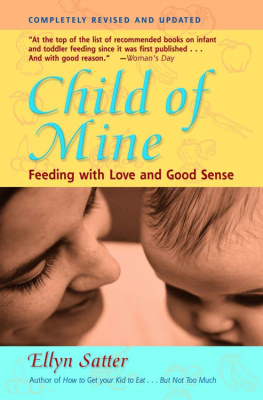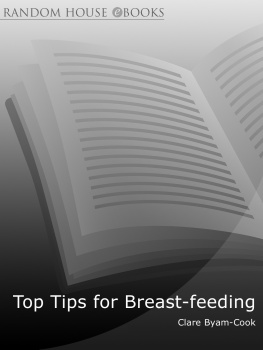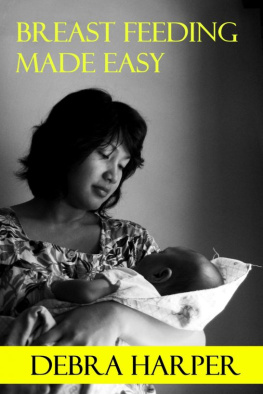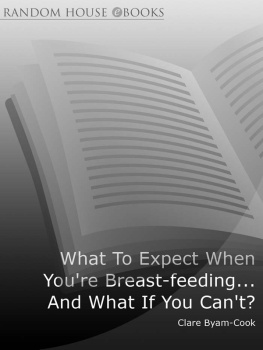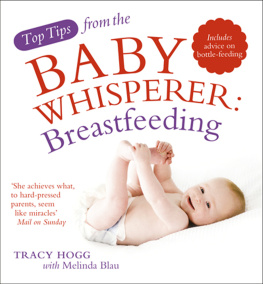Child of Mine
Feeding with Love
and Good Sense
ALSO BY ELLYN SATTER
Secrets of Feeding a Healthy Family
How to Get Your Kid to Eat... But Not Too Much
Ellyn Satters Feeding With Love and Good Sense: Video and Teachers Guide
Ellyn Satters Nutrition and Feeding for Infants and Children: Handout Masters
Ellyn Satters Montana Feeding Relationship: Training Package
Treating the Dieting Casualty: Training Manual
Feeding with Love and Good Sense: Training Manual
Ellyn Satter, MS, RD, CICSW, BCD
Child of Mine
Feeding with Love
and Good Sense
Completely revised and updated

Bull Publishing Company
Boulder, Colorado
Child of Mine: Feeding with Love and Good Sense
Copyright 2000 Ellyn Satter
Bull Publishing Company
P.O. Box 1377
Boulder, CO. 80306
Phone: 303.545.6350
Fax: 303.545.6354
www.bullpub.com
ISBN 978-1-936693-26-9
All rights reserved. No portion of this book may be reproduced or transmitted in any form or by any means, electronic or mechanical, including photocopying and recording, or by any information storage and retrieval system, without permission in writing from Ellyn Satter and Bull Publishing Company.
Library of Congress Cataloging-in-Publication Data
Satter, Ellyn.
Child of mine: feeding with love and good sense/Ellyn Satter.
p. cm.
Completely revised and updated.
Includes bibliographical references and index.
1. ChildrenNutrition. 2. ToddlersNutrition. 3. Child rearing.
I. Title
RJ206 .S24 2000
613.2083dc21
Printed in the U.S.
Publisher: James Bull
Editor: Mary Ray Worley
Cover design: Lightbourne Images
Interior design and composition: Dovetail Publishing Services
Dedicated to my children,
Kjerstin,Lucas, and Curtis,
and to my grandchildren,
Emma, Adele, and Marin
FIGURES
Figure 2.1 Boys Weight for Age Growth Chart
Figure 2.2 Range of Calorie Intake for the Average Infant
Figure 2.3 Range of Calorie Intake for the Average Child
Figure 2.4 Formula Intake of Baby J
Figure 2.5 Growth of Baby J
Figure 2.6 Regulation of Body Weight
Figure 2.7 Satisfaction from Consuming Sugar, Starch, Protein, and Fat
Figure 2.8 The Relationship of Food Intake, Physical Activity, and Body Weight
Figure 4.1 Control of Feeding
Figure 4.2 What Is Your Baby Telling You?
Figure 4.3 Personality Characteristics of Infants and Young Children
Figure 5.1 Checklist for Successful Breastfeeding
Figure 5.2 Cross-Section of a Lactating Breast
Figure 6.1 Protein and Carbohydrate in Formula
Figure 7.1 What Your Baby Can Do and How and What to Feed Him
Figure 8.1 Child Care Feeding Policy
Figure 8.2 Portion Sizes for Children
Figure 8.3 Helping Your Child Eat the Right Amount of Fat
PREFACE
WHEN I BEGAN WRITING Child of Mine back in 1979, I intended it as a farewell gift to a part of my life that had meant a great deal to me. My three children were no longer babies or even toddlersmy youngest child was 8 years old. Not only that, but I was in graduate school preparing to be a psychotherapist, and I was closing my practice as a pediatric dietitian. I had learned a great deal about child nutrition and feeding in my personal and professional lives, and I wanted to write it down and share it with other parents before I forgot it. Imagine my surprise to find myself 20 years later still in the field, still writing, talking and puzzling about feeding babies and children. Readers of the first Child of Mine remember my stories about my children as infants and toddlers and are continually surprised that they havent been frozen in time. My children are adults now, and I am a grandmother.
We have all changed, and it shouldnt be surprising that I return to this revisionand this topicchanged. Actually, the surprise has been that I stayed with the issue at all. Rather than closing the door on child nutrition as I had expected, I found that more and more possibilities and challenges emerged as I began developing ways of helping parents not only with choosing food for children but with feeding relationships as well. I discovered that writing a book is much like having a child. You dont just produce it and walk away. You have a responsibility to raise it, in a sense, and to be raised by it. Like a beloved child, a book provides opportunities for growth and change. Child of Mine catapulted me into the field of feeding dynamicsof understanding the social, emotional, behavioral, and parenting aspects of feeding. While I have become a psychotherapist, I have specialized in feeding and eating problems. I have used my background in mental health to more fully understand the complexity of feeding and to help parents and children with that complexity. I am now ready to weave together all that I have learned in the 20 years since I began to prepare what I thought was my parting gift.
My motives for writing the first edition of Child of Mine werent totally altruisticI was at least partly fueled by anger. I was angry about all the bad feeding advice I had been given, angry to hear that same bad advice being passed along to other young parents, and angry at myself for having bought it. As a young mother who was a dietitian, I had been appalled that I knew so little about feeding my first baby. I vaguely assumed I would breastfeed and then someday start solid foods. I had observed that while I didnt know much about dealing with babies, my newborn daughter seemed to know a good bit about being a baby, so I followed her lead and did what she seemed to need. I know now that my plans were sound enough, she was a competent and intelligible baby, and we were both fortunate that breastfeeding went well. The one big flaw in my plan was my navet: I had absolutely no way to defend against the advice I was being given in the health care setting.
I had been trusting my daughter, but feeding advice seemed to be built on the assumption that what she was telling me was wrong. When she was 1 month old, I was told to begin feeding her infant cereal on the grounds that if I didnt, my newborn infant would get too opinionated to eat it later and that unless I began supplementing breastmilk immediately she would turn into a fat little milk baby. Both of these reasons turned out to be ridiculously unfounded, but at the time I didnt know that. I disliked foisting cereal onto my cuddly month-old baby who was doing so well on breastfeeding, but I did it anyway. By the time she was 10 weeks old I had so slavishly followed advice that I had her on cereal, fruits, vegetables, and mixed dinners. I remember it well, because part of our freight for a 4-week camping trip was jars and jars of baby food. You can imagine what a hassle it was to feed her, and the irony is that it was all so unnecessary. Kjerstin was doing great on breastfeeding, and breastfeeding alone would have worked so well with camping and traveling.
I was so dismayed about my ignorance and about those feeding guidelines that I set out to find a better way. It was heavy going. At first, everything I found was somebodys opinion, presented as if it was a rule set in stone. I became interested in the history of child feeding, and that was helpful, mostly because it demonstrated that there was no real logic or reasoning behind infant feeding recommendations. The only consistency was in attitude: advisors about infant feeding were convinced that they were right and extremely plausibleif poorly foundedin their reasoning. The need to controland in the process ignore childrens needs, behaviors, and capabilitiesis a theme that came up again and again in my research and, unfortunately, remains prominent today. In the early part of this century, infants were kept on breastmilk until they were about a year old. People were afraid to feed their babies solid foods: they thought the babies would get sick, or at least not do as well on anything but breastmilk. They were right, to begin with. At that time many had an erratic food supply and unreliable sanitation and refrigeration. Depending on solid foods could be dangerous for babies. Infant infectious diarrhea was a scourge that caused many deaths, as it still does in developing countries. The problem was that the feeding pattern outlived its usefulness; the pattern persisted although sanitation and refrigeration improved.

